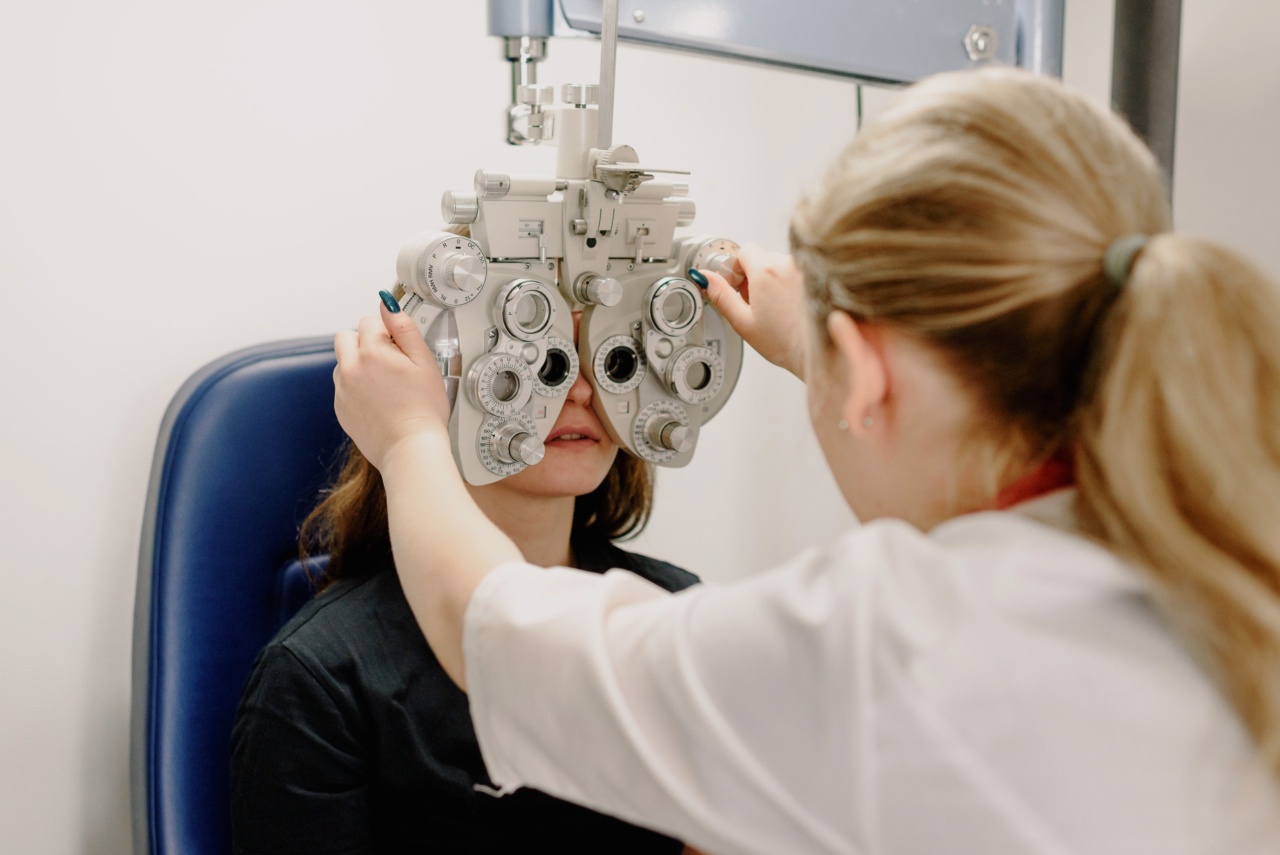Vision is one of the most vital senses we possess. It allows us to perceive the beauty of the world and navigate through our daily lives. However, vision loss is a growing concern globally, affecting people of all ages.
The World Health Organization estimates that around 2.2 billion people suffer from visual impairment or blindness, with the majority of cases being preventable or treatable.
Understanding Vision Loss
Before delving into ways to prevent vision loss, it is crucial to understand the common causes and risk factors associated with this condition.
Vision loss can result from a variety of factors, including age-related macular degeneration, cataracts, glaucoma, diabetic retinopathy, and refractive errors such as nearsightedness, farsightedness, and astigmatism.
While some of these conditions are hereditary or occur naturally with age, others can be prevented or managed through lifestyle changes and proper eye care.
The Role of Nutrition in Eye Health
Nutrition plays a vital role in maintaining good eye health and preventing vision loss. A diet rich in certain nutrients can provide the eyes with the necessary antioxidants, vitamins, and minerals to function optimally.
One such nutrient is fiber, which is typically associated with digestive health but has also been found to have a positive impact on eyesight.
Fiber and Eye Health
Fiber is a type of carbohydrate that cannot be digested by the body. It passes through the digestive system relatively intact and aids in maintaining bowel regularity.
However, fiber also offers a range of other health benefits, including its impact on eye health.
How Does Fiber Benefit the Eyes?
The benefits of fiber for eye health can be attributed to its ability to regulate blood sugar levels, reduce cholesterol, and maintain a healthy weight.
These factors significantly contribute to the prevention and management of conditions such as diabetes and high blood pressure, which can have a detrimental impact on vision.
Preventing Diabetic Retinopathy
Diabetic retinopathy is a condition that affects individuals with diabetes. It occurs when high blood sugar levels damage the blood vessels in the retina, leading to vision loss.
By incorporating fiber-rich foods into the diet, individuals with diabetes can stabilize their blood sugar levels, reducing their risk of developing diabetic retinopathy.
Protecting Against Age-Related Macular Degeneration
Age-related macular degeneration (AMD) is a leading cause of vision loss in older adults. It affects the macula, the central part of the retina responsible for sharp and detailed vision.
Research suggests that a diet rich in fiber, particularly from fruits and vegetables, can lower the risk of developing AMD and slow its progression.
Combatting Cataracts
Cataracts are characterized by the clouding of the lens inside the eye, leading to blurry vision. While cataracts are often associated with aging, certain lifestyle factors can increase the risk of developing this condition.
High dietary fiber intake has been linked to a decreased risk of cataracts, as it helps maintain proper blood sugar levels and supports overall eye health.
Optimizing Overall Eye Health
In addition to preventing specific eye conditions, fiber intake can contribute to overall eye health.
By promoting healthy blood sugar levels, reducing cholesterol, and maintaining a healthy weight, fiber helps prevent conditions that can indirectly impact vision, such as diabetes and high blood pressure.
Ways to Incorporate Fiber into Your Diet
Adding fiber to your daily diet is simple and can be achieved through various sources. Here are some tips to help you increase your fiber intake:.
1. Include Whole Grains
Opt for whole grain options such as brown rice, whole wheat bread, and oatmeal instead of refined grains. Whole grains not only provide fiber but also contain other beneficial nutrients for eye health.
2. Eat More Fruits and Vegetables
Fruits and vegetables are excellent sources of fiber. Incorporate a variety of colorful produce in your diet, such as berries, oranges, leafy greens, and cruciferous vegetables, to maximize fiber intake and overall eye health benefits.
3. Choose Legumes and Beans
Legumes and beans, including lentils, chickpeas, and kidney beans, are rich sources of fiber. They can be easily incorporated into soups, stews, salads, or used as a plant-based protein alternative.
4. Snack on Nuts and Seeds
Nuts and seeds, such as almonds, walnuts, chia seeds, and flaxseeds, not only provide fiber but also offer essential fatty acids beneficial for eye health. Enjoy them as a snack or sprinkle them on top of salads and yogurt for an added fiber boost.
5. Read Food Labels
When buying packaged or processed foods, check the nutrition labels for fiber content. Look for products that contain higher amounts of dietary fiber and choose them over those with lower fiber content.
Conclusion
Fiber is a valuable addition to any diet, not only for digestive health but also for the prevention of vision loss.
By incorporating fiber-rich foods into your daily meals, you can take proactive steps towards maintaining optimal eye health and reducing the risk of age-related eye conditions. Remember to consult with your healthcare provider or an eye specialist to develop a personalized approach to eye care that suits your unique needs.




























